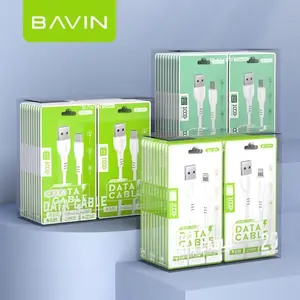
BAVIN High Quality IOS Android Cables Charger Fast Charging Mirco Type-C Usb Cell Mobile Phone Data Cable CB221

Cable Manufacturer Stranded 300V RVS Twisted Pair Flexible Cable 2 Core 0.5 0.75 1 1.5 2.5mm Electrical Copper Wires






















A data cable connects physical components to enable communication within a device and between devices. It frequently builds connections between different sites all over a network on computer and telecommunications platforms. A data transfer cable can transmit electrical signals to the receiving device via this connection. In addition, it ensures data gets sent fast, consistently, and securely. For instance, a serial advanced technology attachment or SATA data cable connects drives like hard drives, optical drives, and solid-state memory in computer cable assemblies.
Although they appear to be quite similar, a USB charging cable and a USB data cable differ significantly in several important ways. Four wires are typically present in a data cable: one positive, one negative, one for receiving data, and one for sending data. The USB charging cord doesn't detect external devices and can't transfer data. Their only and exclusive function is to recharge the connected device's battery. Typically, an individual can charge a gadget with a USB data transfer cable. Also, a USB transfer cable has thicker wires, so individuals can do more with them. For instance, a USB-C data cable can handle video and power.
Host controllers in hubs and personal computers use USB type-a connectors, sometimes called USB standard type-a connectors. Desktop computers commonly use type-b connectors to connect external hard drives and printers. This connector almost has a square appearance. Digital cameras, MP3 players, and several mobile phones use the mini type-b connector, which supports USB 1.1 and 2.0 speeds. Because it can transport data and deliver power, a micro USB data cable was formerly the industry standard for portable devices like tablets and smartphones. It is smaller than USB type-a and is available in type-a micro and type-b micro types. A type-c transfer cable is sturdy enough for a laptop computer. It is also thin enough for a smartphone or tablet. Type c data cable is the only connector available on laptops for video, network, data transfer, and charging. The USB type-c has a more compact design than earlier USB cable types. Reversibility and its shape factor make it easy to plug in.